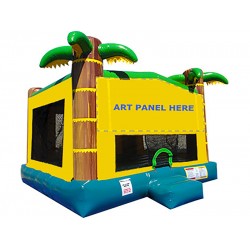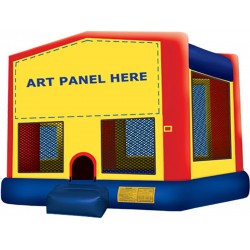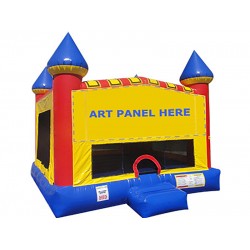What Is the Typical Lifespan of an Jumping Castle?

The lifespan of a jumping castle, also known as an inflatable castle, can vary based on several factors. Generally, a well-maintained jumping castle can provide many years of fun and entertainment. Here’s an overview of what influences its typical lifespan and what you can expect:
1. Average Lifespan
On average, a jumping castle can last between 5 to 10 years. This estimate assumes regular maintenance, proper usage, and appropriate storage. Some high-quality models may last longer, while others may have a shorter lifespan depending on their care and use.
2. Quality of Materials
The quality of materials used in the construction of the jumping castle plays a significant role in its longevity:
- Durable Fabrics: Inflatable castles made from heavy-duty, high-quality PVC or nylon tend to last longer due to their resistance to wear and tear.
- Reinforced Seams: Strong and well-stitched seams contribute to the overall durability of the inflatable castle.
3. Usage Frequency
How often the jumping castle is used can impact its lifespan:
- Frequent Use: Regular use can accelerate wear and tear, potentially reducing the lifespan. Frequent repairs and maintenance may be required.
- Occasional Use: If used infrequently, the jumping castle is likely to last longer as it experiences less stress and fewer operational issues.
4. Maintenance and Care
Proper maintenance is crucial for extending the life of a jumping castle:
- Cleaning: Regular cleaning to remove dirt and debris helps prevent material degradation and keeps the castle in good condition.
- Inspections: Frequent inspections for signs of wear, damage, or leaks allow for timely repairs and prevent further issues.
- Repairs: Promptly addressing minor damages can prevent them from becoming more serious problems that could shorten the lifespan.
5. Storage Conditions
How the jumping castle is stored when not in use affects its longevity:
- Dry Storage: Storing the castle in a dry environment helps prevent mold and mildew growth, which can weaken the material.
- Avoiding Extreme Conditions: Keeping the castle away from direct sunlight and extreme temperatures reduces the risk of material degradation.
6. Environmental Factors
Environmental conditions can impact the lifespan of a jumping castle:
- Weather Exposure: Prolonged exposure to rain, wind, and UV rays can shorten the lifespan of the inflatable castle by causing material damage.
- Ground Surface: Placing the castle on a smooth, clean surface minimizes the risk of abrasions and punctures from sharp objects.
Conclusion
The typical lifespan of a jumping castle can range from 5 to 10 years, depending on factors such as material quality, usage frequency, maintenance, storage conditions, and environmental factors. By investing in high-quality equipment and following best practices for care and maintenance, you can maximize the longevity of your jumping castle and ensure it provides many years of enjoyment.




Leave a Comment